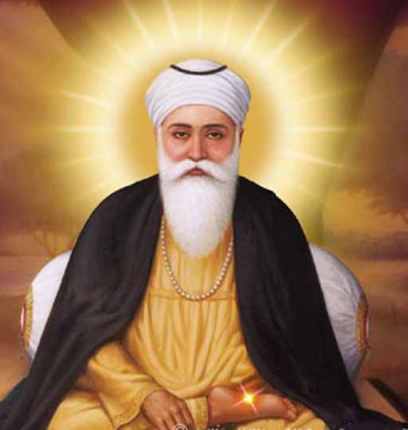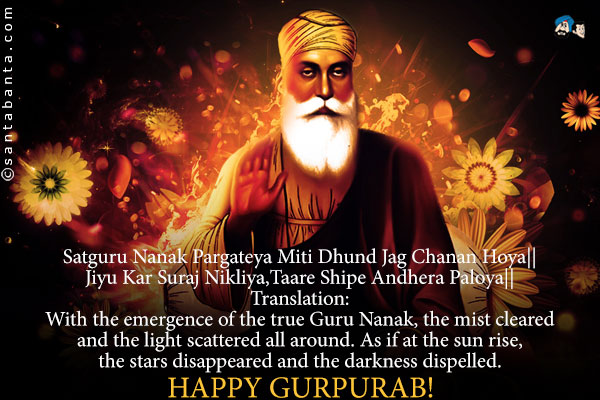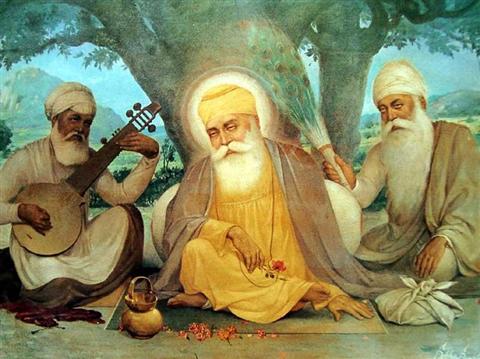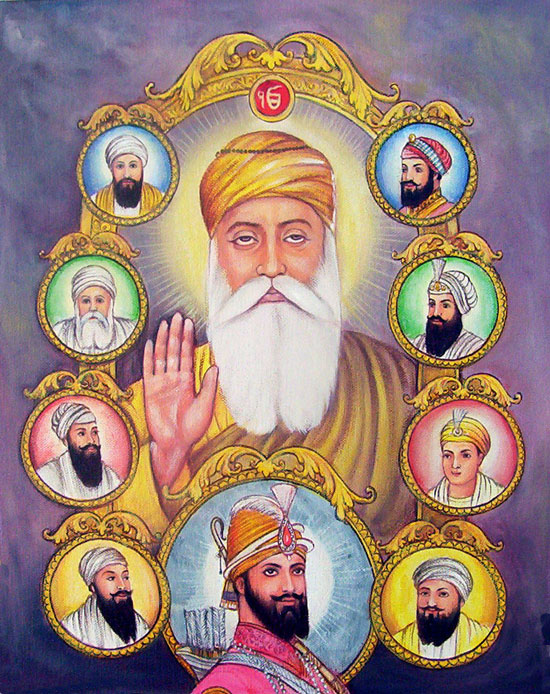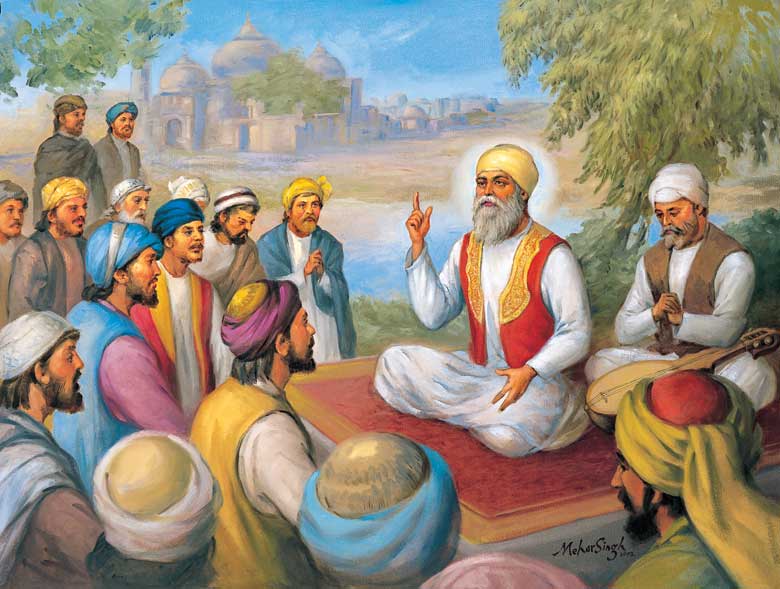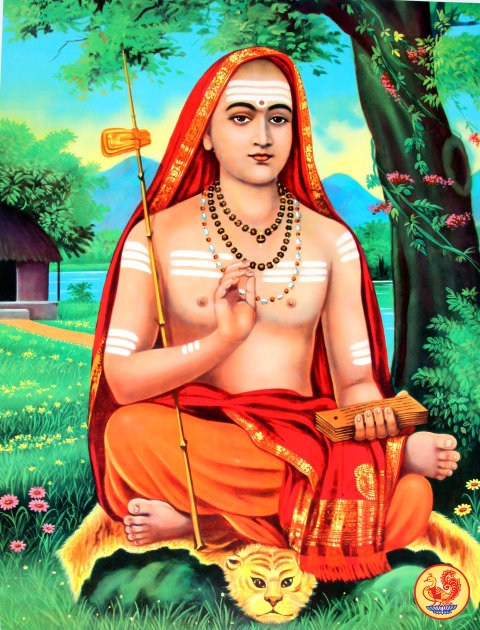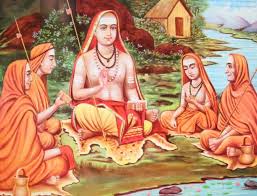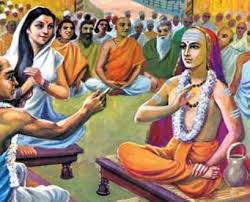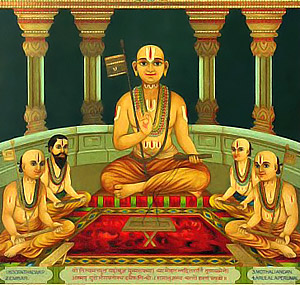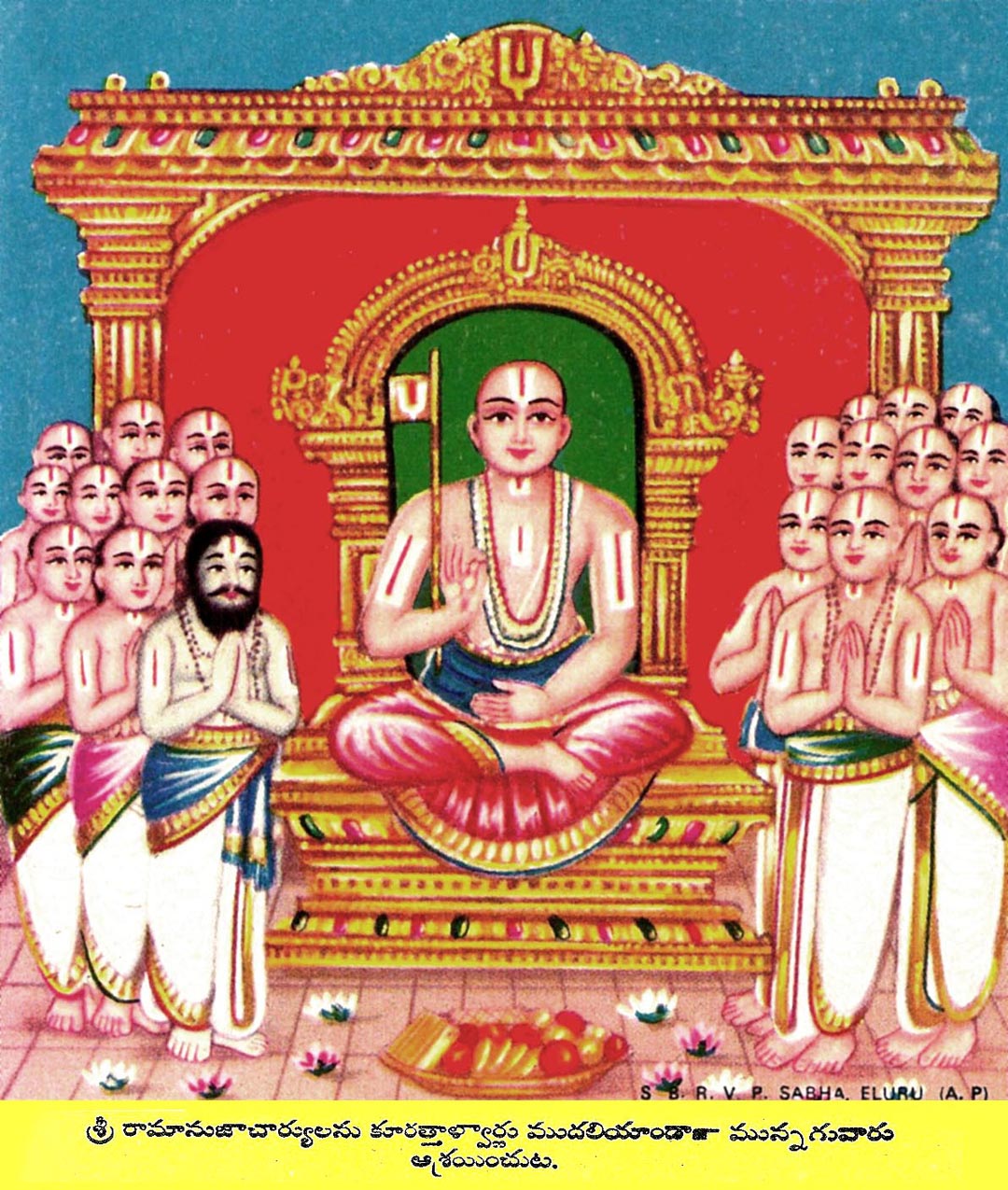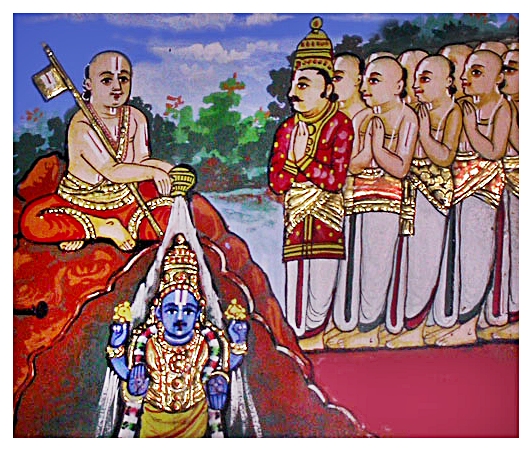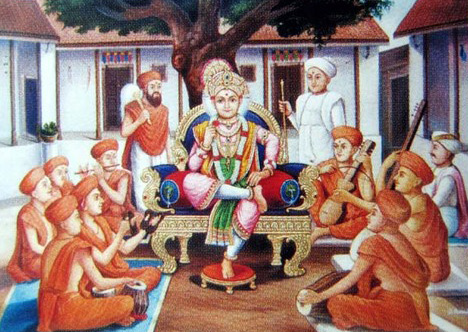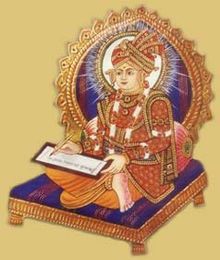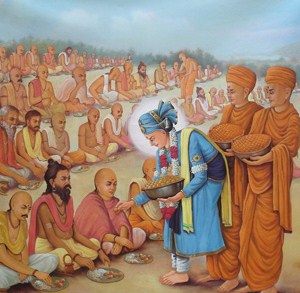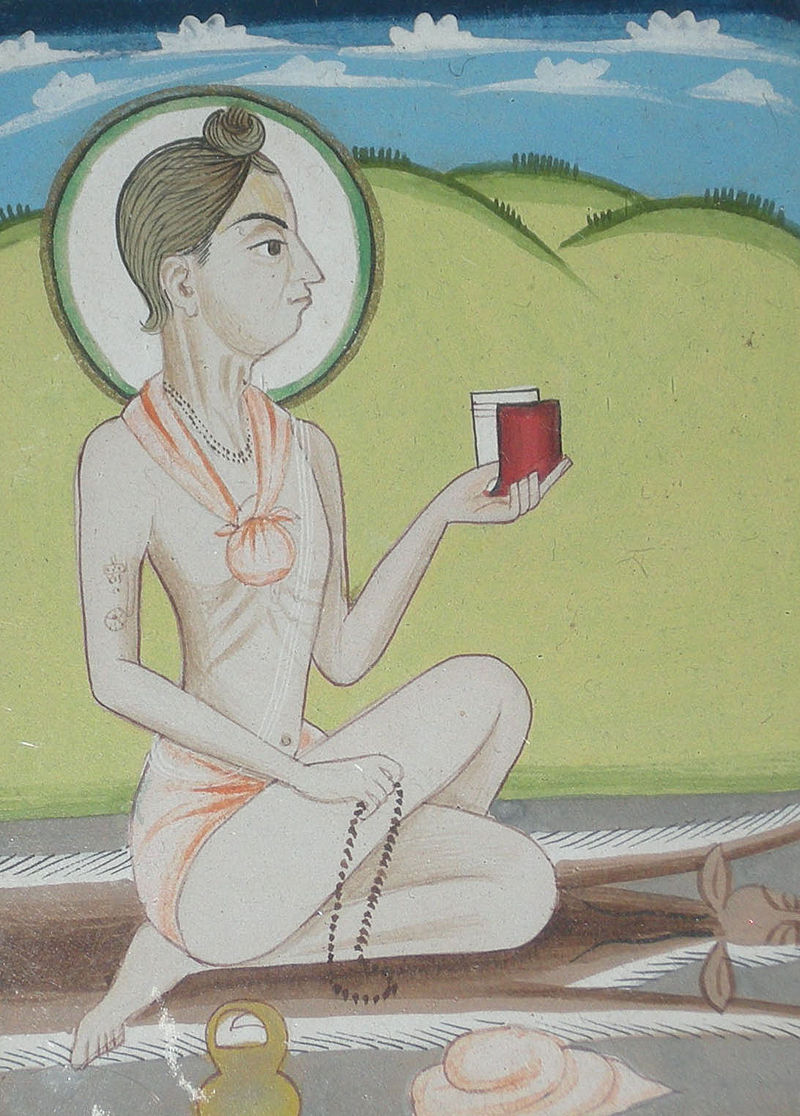
Click the image to view more information about the Leader.
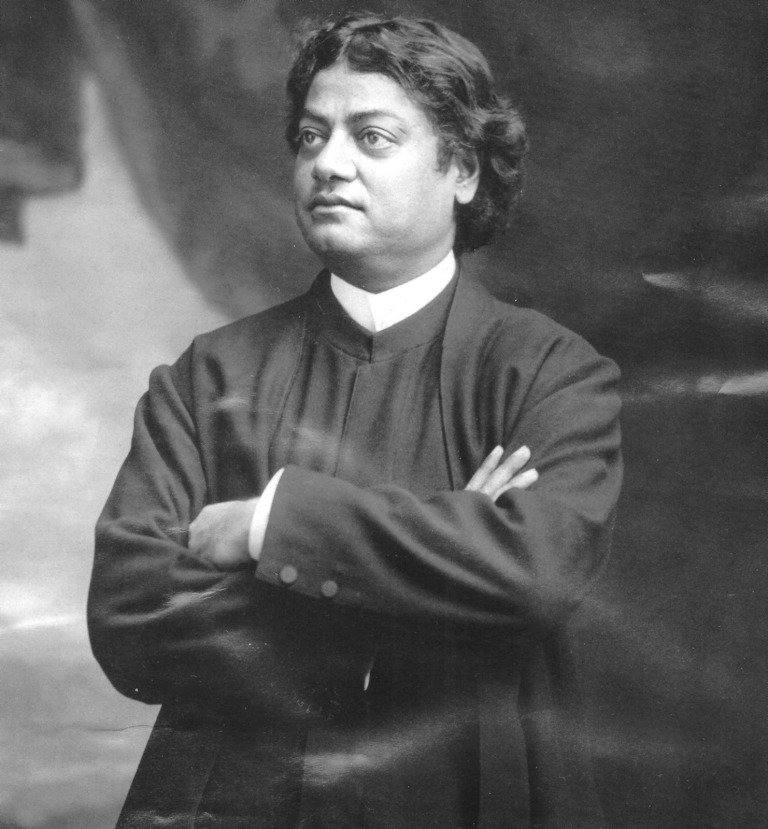

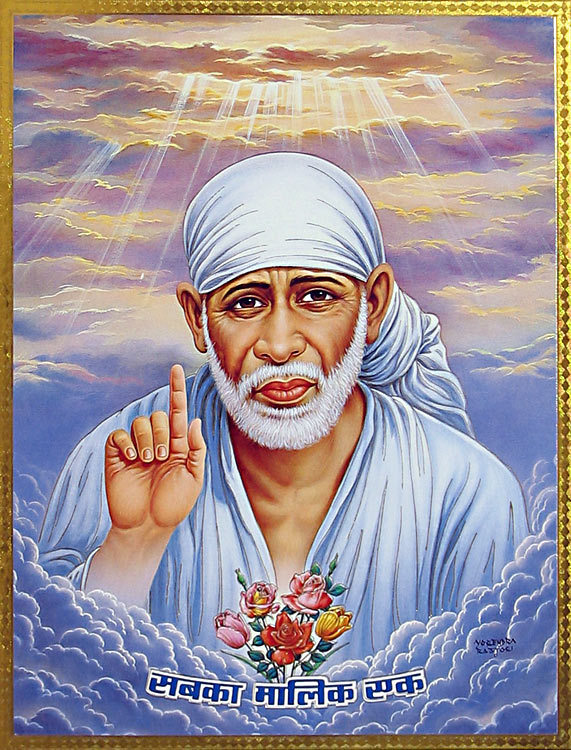
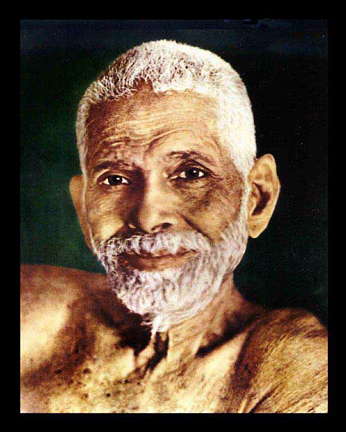
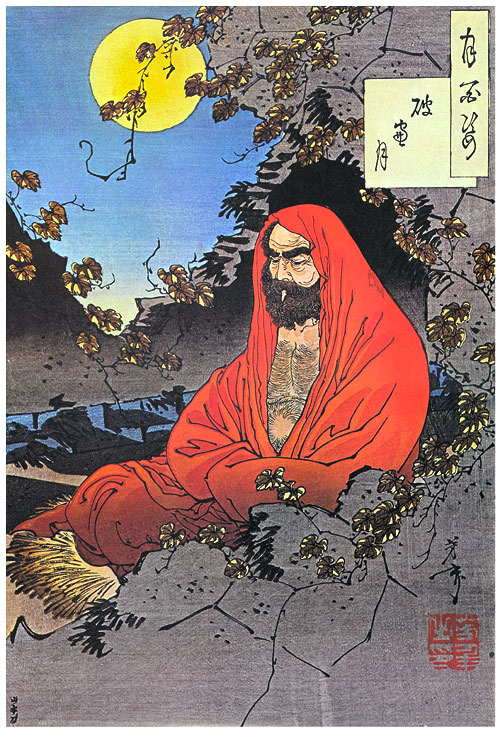
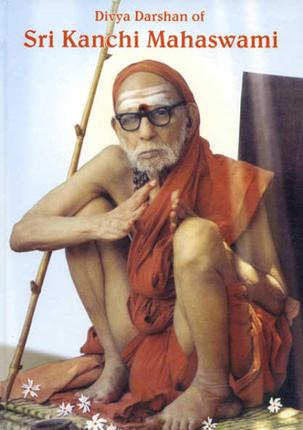


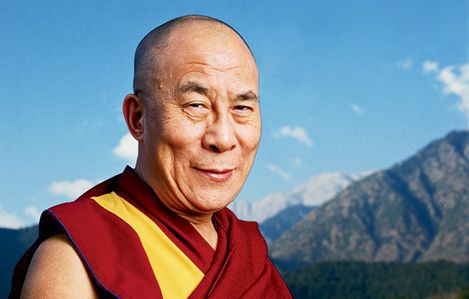 Dalai Lama
Dalai Lama
12 January 1863-4 July 1902 (aged 39)

SWAMI VIVEKANANDA'S inspiring personality was well known both in India and in America during the last decade of the nineteenth century and the first decade of the twentieth. The unknown monk of India suddenly leapt into fame at the Parliament of Religions held in Chicago in 1893, at which he represented Hinduism. His vast knowledge of Eastern and Western culture as well as his deep spiritual insight, fervid eloquence, brilliant conversation, broad human sympathy, colourful personality, and handsome figure made an irresistible appeal to the many people who came in contact with him. By the time he passed on at the Belur Mutt, on July 4, 1902, he had launched a revolution that still resonates around the world today. As a vehicle for his Guru's message, he has been an inspiration for youth around the world for over a century.

Swami Vivekananda, known in his pre-monastic life as Narendranath Datta, was born in an affluent family in Kolkata on 12 January 1863 to his parents Vishwanath Datta and Bhuvaneswari Devi.
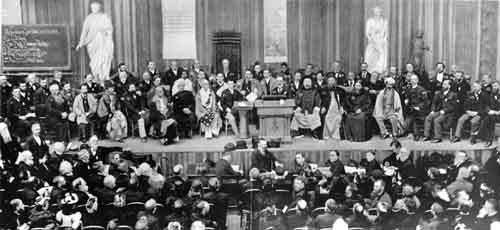
Born into an aristocratic Bengali family of Calcutta, Swami Vivekananda, known in his pre-monastic life as Narendranath Datta or shortly Narendra who was inclined towards spirituality. He was influenced by his Guru Ramakrishna Paramahamsa, from whom he learnt that all living beings were an embodiment of the divine self; therefore, service to God could be rendered by service to mankind. Ramakrishna had a very different kind of attachment towards Vivekananda because he saw him as a means to take his message to the world. Vivekananda was equally mad about Ramakrishna Paramahamsa. He did not look for any employment, he did not do anything that people of his age were normally supposed to do. He just followed Ramakrishna all the time. After Ramakrishna's death, Vivekananda toured the Indian subcontinent extensively and acquired first-hand knowledge of the conditions prevailing in British India. He later travelled to the United States, representing India at the 1893 Parliament of the World Religions. Vivekananda conducted hundreds of public and private lectures and classes, disseminating tenets of Hindu philosophy in the United States, England and Europe. In India, Vivekananda is regarded as a patriotic Saint and his birthday is celebrated as National Youth Day.
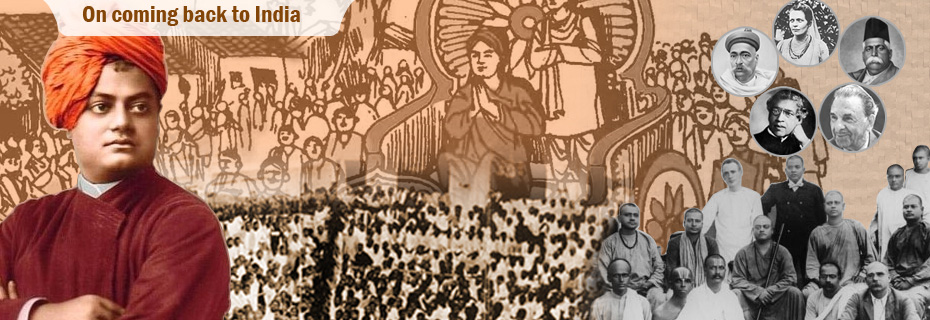
Swami Vivekananda was taught that service to men was the most effective worship of God. Sri Ramakrishna instilled in the young devotees of him with the spirit of renunciation and brotherly love for one another. After Ramakrishna's death Narendra started a new math (monastery) at Baranagar and along with other disciples used to spend many hours in practicing meditation and religious austerities every day. In 1887 they took the formal vows of Sannyasa, thereby assuming new names. Narendra then became Swami Vivekananda. While most of the followers of Sri Ramakrishna thought of him in relation to their own personal lives, Vivekananda thought of the Master in relation to India and the rest of the world.
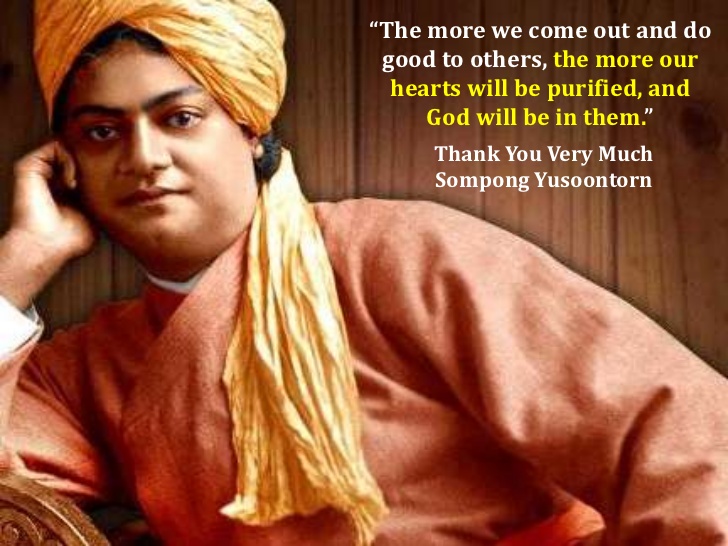
The question and the awareness of Swami Vivekananda's own inherent powers urged Swamiji to go out alone into the wide world. So in the middle of 1890, after receiving the blessings of Sri Sarada Devi, Swamiji left Baranagar Math and embarked on a long journey of exploration and discovery of India. He understood that the masses needed two kinds of knowledge: secular knowledge to improve their economic condition and spiritual knowledge to infuse in them faith in themselves and strengthen their moral sense. One thing became clear to Swamiji: to carry out his plans for the spread of education and for the uplift of the poor masses, and also of women, an efficient organization of dedicated people was needed. As he said later on, he wanted "to set in motion a machinery which would bring noblest ideas to the doorstep of even the poorest and the meanest." It was to serve as this 'machinery' that Swamiji founded the Ramakrishna Mission in 1897.
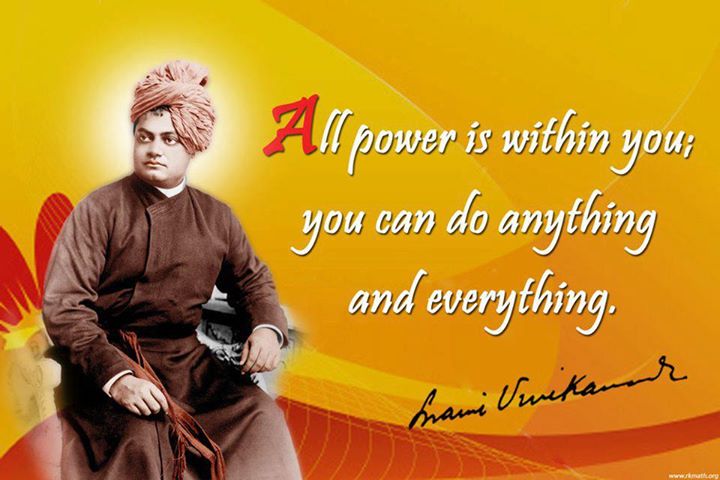
One of the most significant contributions of Swami Vivekananda to the modern world is his interpretation of religion as a universal experience of transcendent Reality, common to all humanity. Swamiji met the challenge of modern science by showing that religion is as scientific as science itself; religion is the 'Science of Consciousness'. As such, religion and science are not contradictory to each other but are complementary. Through science and technology man has attained great prosperity and power, and modern methods of communication and travel have converted human society into a 'global village'. But the degradation of man has also been going on apace, as witnessed by the enormous increase in broken homes, immorality, violence, crime, etc. in modern society. Vivekananda's concept of potential divinity of the soul prevents this degradation, divinizes human relationships, and makes life meaningful and worth living. Another great contribution of Swami Vivekananda was to build a bridge between Indian culture and Western culture. He did it by interpreting Hindu scriptures and philosophy and the Hindu way of life and institutions to the Western people in an idiom which they could understand. He made the Western people realize that they had to learn much from Indian spirituality for their own well-being.
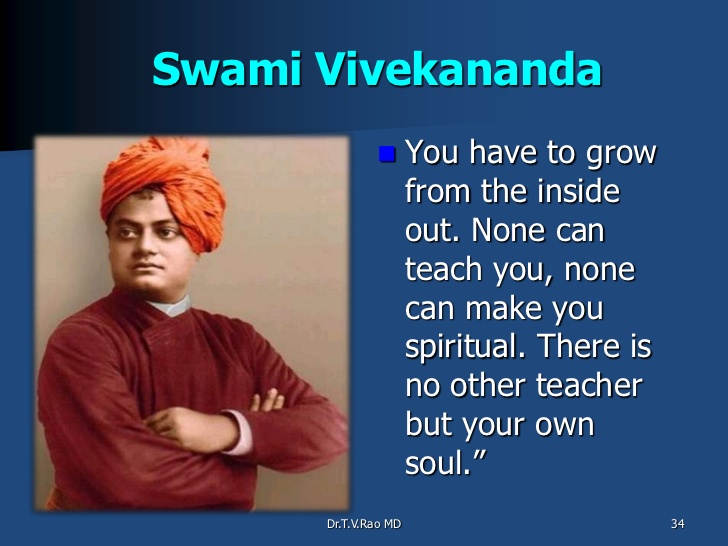
Swami Vivekananda was the first religious leader in India to understand and openly declare that the real cause of India's downfall was the neglect of the masses. His speeches at the World's Parliament of Religions held in September 1893 made him famous as an 'Orator by Divine Right' and as a 'Messenger of Indian wisdom to the Western world'. After the Parliament, Swamiji spent nearly three and a half years spreading Vedanta as lived and taught by Sri Ramakrishna, mostly in the eastern parts of USA and also in London
He returned to India in January 1897. In response to the enthusiastic welcome that he received everywhere, he delivered a series of lectures in different parts of India, which created a great stir all over the country. Through these inspiring and profoundly significant lectures Swamiji attempted to do the following:
* To rouse the religious consciousness of the people and create in them pride in their cultural heritage;
* To bring about unification of Hinduism by pointing out the common bases of its sects;
* To focus the attention of educated people on the plight of the downtrodden masses, and
* To expound his plan for their uplift by the application of the principles of Practical Vedanta.
Following literary works on Raja Yoga, Karma Yoga, Bhakti Yoga and Jnana Yoga became famous throughout the world.
Swami Vivekananda founded the following Ramakrishna Mission & Ramakrishna Math located at the below address P.O. Belur Math-711202, Dist Howrah, West Bengal.

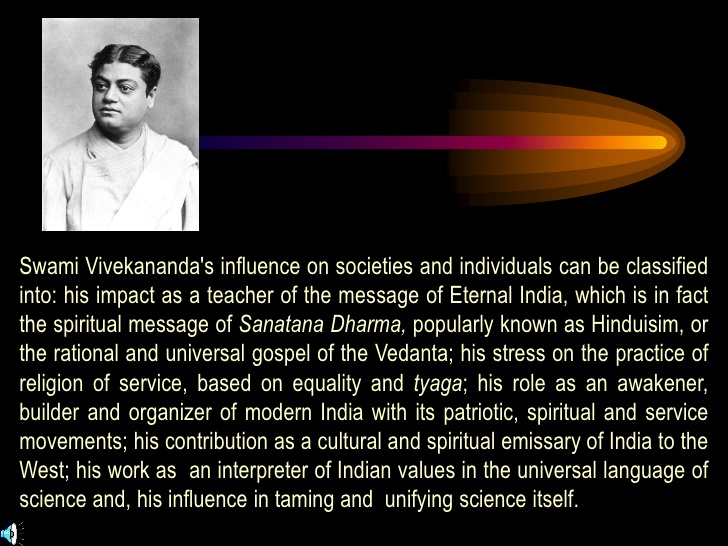



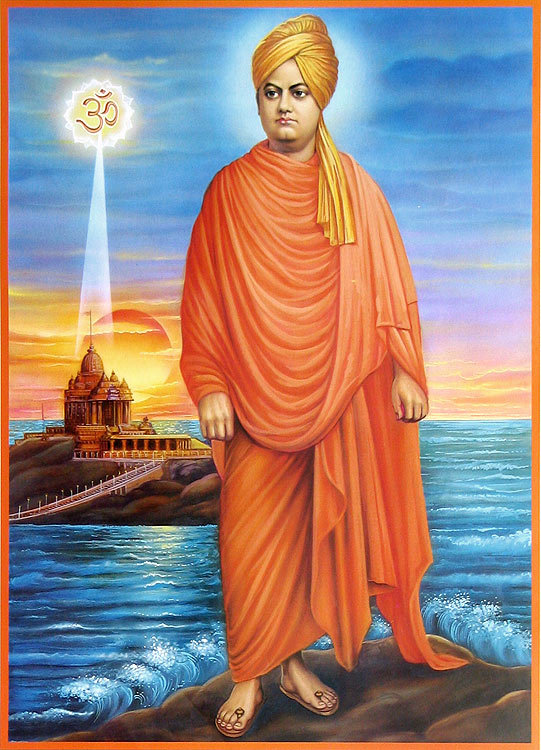
18 February 1836 to 16 August 1886

Sri Ramakrishna who was born in 19th century in a poor Brahmin Vaishnava family in rural Bengal represented the very core of the spiritual realizations of the seers and sages of India. His whole life was literally an uninterrupted contemplation of God. At a time when the very foundation of religion, faith in God, was crumbling under the relentless blows of materialism and skepticism, Sri Ramakrishna, through his burning spiritual realizations, demonstrated beyond doubt the reality of God and the validity of the time-honored teachings of all the prophets and saviors of the past, and thus restored the falling edifice of religion on a secure foundation.

He became a priest of the Dakshineswar Kali Temple, dedicated to the goddess Kali, which had the influence of the main strands of Bengali bhakti tradition. The most widely known amongst his first spiritual teachers was an ascetic woman, called Bhairavi Brahmani, who was skilled in Tantra and Vaishnavabhakti. Later an Advaita Vedanti ascetic, Tota Puri, taught him non-dual meditation, and he experienced nirvikalpa samadhi under his guidance. His religious school of thought led to the formation of the Ramakrishna Mission by his chief disciple Swami Vivekananda. Tota Puri gave him the name Ramakrishna Paramahamsa.
When Sri Ramakrishna was in search of a disciple who would be a torchbearer of spiritualism to the western world he found Swami Vivekananda in Narendranath.

Ramakrishna known as Gadadhar Chatterji or Gadadhar Chattopadhyay, on 18 February 1836 in the village of Kamarpukur about sixty miles northwest of Kolkata. His parents, Kshudiram Chattopadhyaya and Chandramani Devi, were poor but very pious and virtuous.

From early days, he was disinclined towards formal education and worldly affairs. He was, however, a talented boy, and could sing and paint well. He was fond of serving holy men and listening to their discourses. He was also very often found to be absorbed in spiritual moods. At the age of six, he experienced the first ecstasy while watching a flight of white cranes moving against the background of black clouds. This tendency to enter into ecstasy intensified with age. His father's death when he was seven years old served only to deepen his introspection and increase his detachment from the world.
When Sri Ramakrishna was sixteen, his brother Ramkumar took him to Kolkata to assist him in his priestly profession. In 1855 the Kali Temple at Dakshineswar built by Rani Rasmani was consecrated and Ramkumar became the chief priest in that temple. When he died a few months later, Ramakrishna was appointed the priest. Ramakrishna developed intense devotion to Mother Kali and spent hours in loving adoration of her image, forgetting the rituals of priestly duties. His intense longing culminated in the vision of Mother Kali as boundless effulgence engulfing everything around him.

Sri Ramakrishna's God-intoxicated state alarmed his relatives in Kamarpukur and they got him married to Saradamani, a girl from the neighbouring village of Jayrambati. Unaffected by the marriage, Sri Ramakrishna plunged into even more intense spiritual practices. Impelled by a strong inner urge to experience different aspects of God he followed, with the help of a series of Gurus, the various paths described in the Hindu scriptures, and realized God through each of them. The first teacher to appear at Dakshineswar (in 1861) was a remarkable woman known as Bhairavi Brahmani who was an advanced spiritual adept, well versed in scriptures. With her help Sri Ramakrishna practised various difficult disciplines of the Tantrik path, and attained success in all of them. Three years later came a wandering monk by name Tota Puri, under whose guidance Sri Ramakrishna attained Nirvikalpa Samadhi, the highest spiritual experience mentioned in the Hindu scriptures. He remained in that state of non-dual existence for six months without the least awareness of even his own body
In 1872, his wife Sarada, now nineteen years old, came from the village to meet him. He received her cordially, and taught her how to attend to household duties and at the same time lead an intensely spiritual life. One night he worshipped her as the Divine Mother in his room at the Dakshineswar temple. Although Sarada continued to stay with him, they lived immaculately pure lives, and their marital relationship was purely spiritual. It should be mentioned here that Sri Ramakrishna had been ordained a Sannyasin (Hindu monk), and he observed the basic vows of a monk to perfection. But outwardly he lived like a lay man, humble, loving and with childlike simplicity. During Sri Ramakrishna's stay at Dakshineswar, Rani Rasmani first acted as his patron. After her death, her son-in-law Mathur Nath Biswas took care of his needs
He developed cancer of the throat in 1885. He was shifted to a spacious suburban villa where his young disciples nursed him day and night. He instilled in them love for one another, and thus laid the foundation for the future monastic brotherhood known as Ramakrishna Math. In the small hours of 16 August 1886 Sri Ramakrishna gave up his physical body, uttering the name of the Divine Mother, and passed into Eternity

In 1861, Ramakrishna accepted Bhairavi Brahmani as his teacher. According to the Bhairavi, Ramakrishna was experiencing phenomena that accompany mahabhava-the supreme attitude of loving devotion towards the divine and quoting from the bhakti shastras, she said that other religious figures like Radha and Chaitanya had similar experiences.
Under Bhairavi Brahmani's guidance, Ramakrishna went through sixty four major tantric sadhanas which were completed in 1863. He began with mantra rituals such as japa and purascarana and many other rituals designed to purify the mind and establish self-control. He later proceeded towards tantric sadhanas, which generally include a set of heterodox practices called vamachara (left-hand path). According to Ramakrishna and his biographers, Ramakrishna did not directly participate in activities of drinking of wine and sexual intercourse all that he needed was a suggestion of them to produce the desired result. Ramakrishna acknowledged the left-hand tantric path, though it had "undesirable features", as one of the "valid roads to God-realization", he consistently cautioned his devotees and disciples against associating with it. The Bhairavi also taught Ramakrishna the Kumari-puja, a form of ritual in which the Virgin Goddess is worshiped symbolically in the form of a young girl. Under the tutelage of the Bhairavi, Ramakrishna also learnt Kundalini Yoga. The Bhairavi, with the yogic techniques and the tantra played an important part in the initial spiritual development of Ramakrishna

At some point in the period between his vision of Kali and his marriage, Ramakrishna practised dasya bhava, during which he worshiped Rama with the attitude of Hanuman, the monkey-god, who is considered to be the ideal devotee and servant of Rama. According to Ramakrishna, towards the end of this sadhana, he had a vision of Sita, the consort of Rama, merging into his body
In 1864, Ramakrishna practised vatsalya bhava under a Vaishnava guru Jatadhari. During this period, he worshipped a metal image of Ramlala (Rama as a child) in the attitude of a mother. According to Ramakrishna, he could feel the presence of child Rama as a living God in the metal image
Ramakrishna later engaged in the practice of madhura bhava - the attitude of the Gopis and Radha towards Krishna. During the practise of this bhava, Ramakrishna dressed himself in women's attire for several days and regarded himself as one of the Gopis of Vrindavan. According to Sri Ramakrishna, madhura bhava is practised to root out the idea of sex, which is seen as an impediment in spiritual life. According to Ramakrishna, towards the end of this sadhana, he attained savikalpa samadhi-vision and union with Krishna.

Ramakrishna visited Nadia, the home of Lord Sri Chaitanya Mahaprabhu and Sri Nityananda Prabhu, the 15th-century founders of Bengali Gaudiya Vaishnava bhakti. According to Ramakrishna, he had an intense vision of two young boys merging into his body. Earlier, after his vision of Kali, he was said to have cultivated the Santa bhava-the child attitude - towards Kali
In 1865, Ramakrishna was initiated into sannyasa by Totapuri, Totapuri stayed with Ramakrishna for nearly eleven months and instructed him further in the teachings of advaita. Ramakrishna said that this period of nirvikalpa samadhi came to an end when he received a command from the Mother Kali to "remain in Bhavamukha for the enlightenment of the people". Bhavamukha being a state of existence intermediate between samadhi and normal consciousness
In 1866, Govinda Roy, a Hindu guru who practised Sufism, initiated Ramakrishna into Islam. Ramakrishna said that he "devoutly repeated the name of Allah, wore a cloth like the Arab Muslims, said their prayer five times daily, and felt disinclined even to see images of the Hindu gods and goddesses, much less worship them-for the Hindu way of thinking had disappeared altogether from my mind." According to Ramakrishna, after three days of practice he had a vision of a "radiant personage with grave countenance and white beard resembling the Prophet and merging with his body".

At the end of 1873 he started the practice of Christianity, when his devotee Shambu Charan Mallik read the Bible to him. Ramakrishna said that for several days he was filled with Christian thoughts and no longer thought of going to the Kali temple. Ramakrishna describes of a vision in which the picture of the Madonna and Child became alive and had a vision in which Jesus merged with his body. In his own room amongst other divine pictures was one of Christ, and he burnt incense before it morning and evening. There was also a picture showing Jesus Christ saving St Peter from drowning in the water.
In preparation for monastic life, Ramakrishna ordered his monastic disciples to beg their food from door to door without distinction of caste. He gave them the saffron robe, the sign of the Sanyasi, and initiated them with Mantra Deeksha.

Although Ramakrishna attended a village school with some regularity for 12 years, he later rejected the traditional schooling saying that he was not interested in a "bread-winning education". Kamarpukur, being a transit-point in well-established pilgrimage routes to Puri, brought him into contact with renunciates and holy men. He became well-versed in the Puranas, the Ramayana, the Mahabharata, and the Bhagavata Purana, hearing them from wandering monks and the Kathaks-a class of men in ancient India who preached and sang the Puranas
He reportedly became so absorbed in a state in his childhood that he lost outward consciousness and experienced indescribable joy while worshipping the goddess Vishalakshi, and portraying god Shiva in a drama during Shivaratri festival. From his 10th or 11th year on, the trances became common, and by the final years of his life, Ramakrishna's samadhi periods occurred almost daily.
While serving as a Priest in Dhakshineshwar Kali Temple, Ramakrishna reportedly had a vision of the goddess Kali as the universal Mother, which he described as "... houses, doors, temples and everything else vanished altogether; as if there was nothing anywhere! And what I saw was an infinite shoreless sea of light; a sea that was consciousness. However far and in whatever direction I looked, I saw shining waves, one after another, coming towards me"

By the time his bride joined him, Ramakrishna had already embraced the monastic life of a sannyasi; as a result, the marriage was never consummated. As a priest Ramakrishna performed the ritual ceremony-the Shodashi Puja-where Sarada Devi was made to sit in the seat of goddess Kali, and worshiped as the Divine mother. Sarada Devi outlived Ramakrishna by 34 years and played an important role in the nascent religious movement.
With his unquenchable thirst for God, Sri Ramakrishna broke the frontiers of Hinduism, glided through the paths of Islam and Christianity, and attained the highest realization through each of them in a short span of time. He looked upon Jesus and Buddha as incarnations of God, and venerated the ten Sikh Gurus. He expressed the quintessence of his twelve-year-long spiritual realizations in a simple dictum: Yato mat, tato path "As many faiths, so many paths." He now habitually lived in an exalted state of consciousness in which he saw God in all beings.
Sri Ramakrishna's name as an illumined saint began to spread. Mathur once convened an assembly of scholars, and they declared him to be not an ordinary human being but the Avatar of the Modern Age. In those days the socio-religious movement known as Brahmo Samaj, founded by Raja Ram Mohan Roy, was at the height of popularity in Bengal. Sri Ramakrishna came into contact with several leaders and members of Brahmo Samaj and exerted much influence on them. His teaching on harmony of religions attracted people belonging to different denominations, and Dakshineswar became a veritable Parliament of Religions.

As bees swarm around a fully blossomed flower, devotees started coming to Sri Ramakrishna. He divided them into two categories. The first one consisted of householders. He taught them how to realize God while living in the world and discharging their family duties. The other more important category was a band of educated youths, mostly from the middle class families of Bengal, whom he trained to become monks and to be the torchbearers of his message to mankind. The foremost among them was Narendranath, who years later, as Swami Vivekananda, carried the universal message of Vedanta to different parts of the world, revitalized Hinduism, and awakened the soul of India.

In the beginning of 1885 Ramakrishna suffered from clergyman's throat, which gradually developed into throat cancer. He was moved to Shyampukur near Calcutta, where some of the best physicians of the time, including Dr. Mahendralal Sarkar, were engaged and later moved to a large garden house at Cossipore on 11 December 1885. During his last days, he was looked after by his monastic disciples and Sarada Devi. Ramakrishna was advised by the doctors to keep the strictest silence, but ignoring their advice, he incessantly conversed with visitors. According to traditional accounts, before his death, Ramakrishna transferred his spiritual powers to Vivekananda and reassured Vivekananda of his avataric status. Ramakrishna asked Vivekananda to look after the welfare of the disciples, saying, "keep my boys together" and asked him to "teach them". Ramakrishna also asked other monastic disciples to look upon Vivekananda as their leader
He attained Maha Samadhi in the early hours of 16 August 1886 at the Cossipore garden house.

Ramakrishna also had interactions with Debendranath Tagore, the father of Rabindranath Tagore, and Ishwar Chandra Vidyasagar, a renowned social worker. He had also met Swami Dayananda. Ramakrishna is considered as one of the main contributors to the Bengali Renaissance.
Most of Ramakrishna's prominent disciples came between 1879 and 1885, and were influenced by his style of preaching and instruction.
Ramakrishna was opinionated on the subject of Chakri. On a basic level, Ramakrishna saw this system (Chakri) as a corrupt form of European social organisation that forced educated men to be servants not only to their bosses at the office but also to their wives at home. However, Ramakrishna demonstrated that Bhakti could be practised as an inner retreat to experience solace in the face of Western-style discipline and often discrimination in the workplace. Ramakrishna taught that kamini-kanchana is an obstacle to God-realization. Kamini-kanchana literally translates to "woman and gold". Swami Tyagananda writes that Ramakrishna used Kamini-Kanchana as "cautionary words" instructing his disciples to conquer the "lust inside the mind".
His speeches reportedly revealed a sense of joy and fun, but he was not at a loss when debating with intellectual philosophers. Philosopher Arindam Chakrabarti contrasted Ramakrishna's talkativeness with Buddha's legendary reticence, and compared his teaching style to that of Socrates.
The Ramakrishna Math and Mission is one of the main organisations founded by Swami Vivekananda in 1897 in line with his Master's teaching that service to mankind was the effective worship of God. The Mission conducts extensive work in health care, disaster relief, rural management, tribal welfare, elementary and higher education. The movement is considered as one of the revitalisation movements of India.

Sri Ramakrishna did not write any book, nor did he deliver public lectures. Instead, he chose to speak in a simple language using parables and metaphors by way of illustration, drawn from the observation of nature and ordinary things of daily use. His conversations were charming and attracted the cultural elite of Bengal. These conversations were noted down by his disciple Mahendranath Gupta who published them in the form of a book, Sri Ramakrishna Kathamrita in Bengali. Its English rendering, The Gospel of Sri Ramakrishna, was released in 1942; it continues to be increasingly popular to this day on account of its universal appeal and relevance.

Swami Vivekananda founded the following Ramakrishna Mission & Ramakrishna Math located at the below address P.O. Belur Math-711202, Dist Howrah, West Bengal.
















